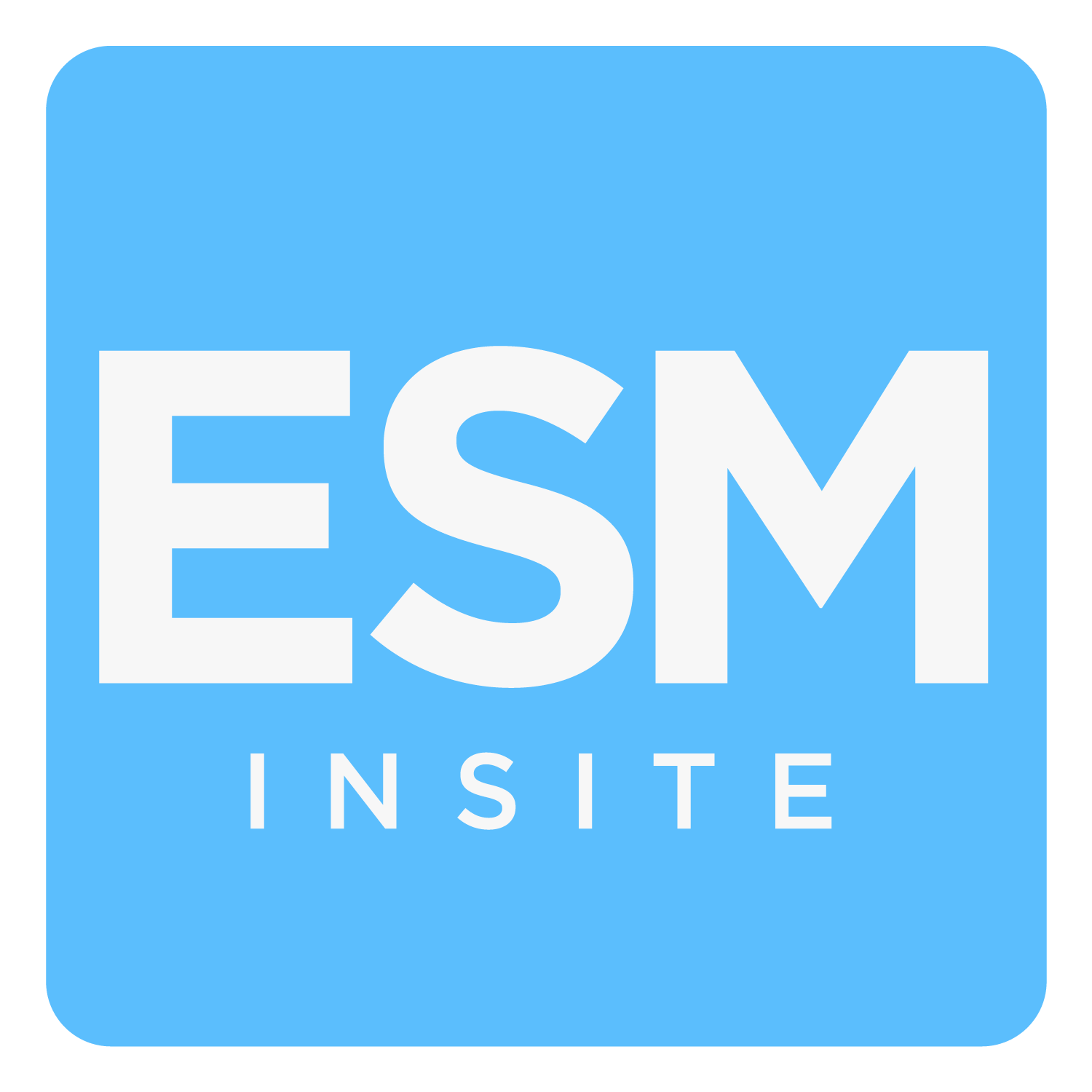Risk Management
Learn how ESM is leveraging data and technology to mitigate risk.
Effective safety programs are the result of management leadership and the application of proven management principles throughout the organization. Risk must be identified and evaluated, appropriate controls must be chosen and implemented, and the entire process must be monitored and continuously improved. ESM's safety professionals are experts in leveraging technology for safety program management and will bring your program a new vision that will lead to safety excellence while reducing risk and cost.
Safety compliance accelerator
Click below to learn about our 4 month program.
Learning Management System
Click below to start digitizing your safety training today.
Leveraging Technology To Manage Risk
ESM utilizes its suite of technology applications to identify and mitigate risk. The data is then aggregated into a business intelligence dashboard that provides risk managers and safety committees an interactive tool that measures the ongoing performance of their safety program. Data is critical into goal setting and Key Performance Indicator monitoring and includes (but not limited to):
Company results versus goals (summary dashboard)
Site inspections scores by location and supervisor
Computer based training scores by department, location and supervisor
Historical loss trending (5 years of data pulled from Work Comp loss runs, including: frequency, severity, nature, cause, etc.)
X-Mod points and injury costs allocated by supervisor (for accountability and performance compensation)
X-Mod comparison to competitors
Digital Safety Inspections (Site Audits)
Understanding the exposures, site audits must be tailored to identifying infractions in company safety policies and OSHA compliance. By leveraging ESM’s digital inspection application, employers can electronically track findings and corrective actions. Benefits of using a digital inspection application include:
Site score generated upon each audit, which can be aligned to company’s safety goals (e.g., 90% inspection score required)
Accountability of site lead and supervisor, as well as training opportunities
Proactive approach to compliance with regulatory standards
Reducti0n in report time as audits are completed in real-time
Corrective action follow up tracking
Aggregation of findings, leading to identification of trends and training opportunities.
Data is imported into business intelligence dashboard and reviewed at safety committee meetings
Task Manager
Within INSITE, tasks are assigned to the appropriate person for visibility and tracking. Maintain a proactive approach to ensuring actions items are being done in alignment with the service plan.
Pre-established workflows to align with the service plan
Visibility and tracking of everyone’s tasks
Real time updates to ensure progress is being made on projects
Collaborate with the service team for ongoing task management
Learning Management System
With a library of general safety and compliance trainings in English and Spanish, ESM will develop a training program specific to your company’s needs. Our LMS strategy includes:
ESM’s LMS coordinators will administer the training program for you
Developing a training schedule (weekly, bi-weekly or monthly plans)
Five to eight minute training modules (English & Spanish) + a short quiz to ensure comprehension of the key points of the training
Certificate of Completion for each training. Printable on-demand
Custom employer branded portal including company logo and color scheme
Training due dates, email notifications and follow up nudges to ensure all employees complete the training
Safety Program Development
Strong safety programs are built rather than evolve. It starts with executive management commitment and their strong leadership to gain involvement of the personnel who will be directing and implementing the program. Program design starts with establishing a Safety Committee that develops a strategic plan, sets policies, procedures and guides the implementation process ensuring sustainability and scalability. Effective safety management is woven into production creating an efficient and safe process.
Safety Committee is responsible for establishing goals and initiatives
Safety Manager is responsible for implementation, providing training and resources to the Department mangers
Department managers are on the front lines, providing training and holding the line employees accountable.
Line employees follow established procedures reducing variation and ultimately risk
Safety Program Improvement
ESM provides strategies that include:
Developing a plan to move along the Risk Maturity spectrum with the goal of creating a participatory culture at Level 5
Outlining measurable proactive initiatives that align with the company goals
Delegation of safety program responsibilities and activities
Communicating safety goals and objectives across the organization creating participatory culture
Scheduling effective and consistent safety communications via monthly trainings or tailgates
OSHA Compliance
Compliance is a critical pillar to a sustainable safety program. At ESM, we provide employers with the policies they need to comply with Cal/OSHA as well as best practices that provide for governance of the safety requirements.
Instead of subjectively managing each employee based on loose management guidelines, ESM establishes structured policies and Standard Operating Procedures (SOPs) in which supervisors can then objectively manage employee safety. This ensures compliance with the Injury & Illness Prevention Plan requirements (element #2 – Ensuring compliance) and creates a system of governance in which the organization operates.
Reduce Injury Frequency & Severity
ESM analyzes 11 categories and 26 points of data to understand loss trends, which help establish annual goals and monthly Key Performance Indicators (KPIs) to monitor your progress. Safety Initiatives can then align with these goals to ensure success, including:
Reviewing monthly loss trends vs. goals
Establishing site audits and corrective action procedures
Developing a safety training program focused on loss leaders and measurable results
Developing Job Safety Analysis (JSA) for standardizing worker instructions
Reduce Lost Days via Return To Work resulting in unnecessary Temporary Disability costs
Reduce Injury Severity
Injury Frequency Reduction
Start implementing your safety strategy today. Schedule a time with an ESM safety manager to learn more.
Complete this form to schedule a free consultation.






